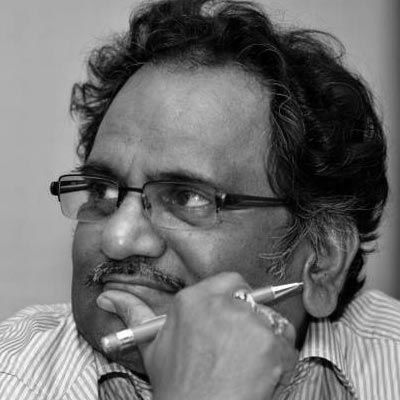Not above fire and law

Not above fire and law, Only effective measure informed to the Central Information Commission (CIC) was keeping a fire-fighting engine at the premises round-the-clock.
The three estates—the Legislature housed in the Parliament Building, the Executive in the Administrative Blocks and the Judiciary in the Supreme Court—and significantly the fourth Estate, Media, are facing the risk of fire with increasing hazard. Only effective measure informed to the Central Information Commission (CIC) was keeping a fire-fighting engine at the premises round-the-clock. That is good. But it can only help in putting off the fire. It cannot prevent it or felicitate the fast eviction as the exit routes from the Parliament House, the Administrative Blocks or the Supreme Court building are totally blocked with waste material.
It is said fire is an obedient servant but terrible master. When one uses fire for productive purposes it serves nicely, but when fire overpowers the situation, it is a disaster beyond imagination. The Andhra Pradesh High Court experienced the disaster of fire. The RTI question of Rohit Sabharwal has revealed that there were no Fire Safety Certificates for the buildings of Parliament and the Supreme Court. The CPIO denied information saying it related to sensitive buildings. On the direction of the CIC, the Delhi Fire Services produced a file which revealed startling aspects such as no information was available whether any action was taken for over a decade about compliance of fire safety norms in the Supreme Court. After making survey of existing fire safety arrangements, Delhi Fire Service wrote to the Deputy Commissioner of Police, the Supreme Court Security, on 30-9-2004, pointing out several deficiencies. As many as 17 observations were made including some recommendations to safeguard the Supreme Court from fire.
1. Access: The width of the main gates was measured to 3.35 mtrs. The width of the main gate for easy access of fire service vehicles shall be at least 5 mtrs.
2. Corridors were encroached by almirah, lockers etc. The encroachment shall be removed.
3. Pumps: Diesel pump was found defective. Sprinkler bell was provided but not functional. No sprinkler actuation alarm was provided in the fire control room.
4. Draw off connection from underground water storage tank was not provided.
5. A.C. plant in basement shall be protected with sprinkler system.
6. Fire extinguishers in Fire control Room were sent for recharging on 26.6.04. Fire extinguishers in basement were not maintained properly.
7. One exit in basement was full of foam seats. Rubbish also accumulated in large quantity in A.C. plant room (basement). Proper house-keeping should be maintained.
8. Zone No.22 & 26 at detection panel installed at Fire control room was lying out of order. Zone chart was not visible.
9. M.C.Bs, provided in the basement, are not functional.
10. Electric transformers of oil-type shall be shifted to safe place and dry type transformer shall be installed instead of oil-type. Ventilation provided between HT/LT, transfers room and corridor of main building shall be sealed. In case of fire break out, it will spread to upper floors.
11. HT/LT panel room shall be provided with CO2 local flooding system.
12. Additional exit signs shall be provided in the new building.
13. Exit gate of Plaza canteen at ground floor was obstructed by A.C. duct. Door should be openable to the outside direction. No fire protection arrangement is provided.
14. Open nozzle spray system shall be provided in LPG bank.
15. Travel distance in C.A. and criminal wing is not meeting the requirement. Lock of emergency gate shall be kept open or key shall be provided near the gate for evacuation purpose in case of any emergency/fire. P.A. system shall also be extended on that wing.
16. Hose Box was lying empty. Two delivery hoses & one short branch shall be provided at each hose box.
17. Awareness programme should be arranged for staff members.
With regard to the Parliament Building, the Delhi Fire Service carried out a joint inspection on 3-8-2013 and suggested six corrective measures.
1. Most of the staircase (main staircase No.1 and 6 and small staircase No.7,8,9,10,11,12) were found locked/inaccessible due to cabin/office/storage of almirahs/ storage of unwanted materials etc. These should be removed/ cleared for easy evacuation in case of any emergency.
2. Electrical room/services in the basement floor have not been provided with requisite fire protection except detection system. All the electrical panels shall be provided with local CO2 application system.
3. All exposed cables should be painted with fire retardant paints.
4. Temporary offices/cabins erected in the common corridor/escape routes shall be removed.
5. In PMO basement, rear side corridor was found blocked by photocopier machines, etc., emergency lights were also not functioning.
6. In 36(A) basement (near the office of Hon’ble Minister AK Antony) single staircase in basement is available and emergency lights were also not functioning.
And, the Law is:
Section 27 of Delhi Fire Services Act 2007 gives power to the Director or any officer to remove encroachments or objects or goods likely to cause risk of fire or any obstruction to fire fighting. Where a director considers such encroachments or objects or goods to be an imminent cause of risk of fire or obstruction to fire fighting, he may direct the owner or the occupier or erector of such premises or building to remove the encroachments or objects or goods forthwith and report the matter to the Sub-Divisional Magistrate accordingly. This section (3) gives power to SDM to seize, detain or remove the encroachments. He can even sell them in public auction.
Under Section 29 owners of certain classes of building should appoint fire safety officer. Section 31 empowers the Director to impose penalty in default of non-appointment of fire Safety Officer with a sum not less than ten rupees per square meter of area owned or occupied. Section 41 imposes liability of property owner to pay compensation to any other person suffering damage. Section 49 provides for imposing penalty for failure to take precautions which include three months imprisonment and fine.
It is a grave matter of lives of hundreds of Constitutional office-holders. The information sought is a matter relating to their lives which should have been answered within 48 hours. Fire broke out in the Andhra Pradesh High Court building, a heritage structure, destroying the chambers of five judges, a library housing valuable books and a mini-conference hall in the early hours of August 31, 2009. More than 100 firemen had to sweat it out for over three hours using 15 fire tenders to douse the flames that began around 4.30 a.m. Though the blaze was put out by 7 a.m., smoke continued to billow out till evening prompting Fire Service officials to continue fire-fighting operations and deploy teams of firemen at the spot to face any eventuality. (http://www.thehindu.com/todays-paper/fire-in-high-court-destroys-judges-chambers-library/article173249.ece) The Hindu commented: “Waiting to happen: Firemen spraying water to put out the fire in the High Court building”. The Commission observed that public authority had to learn lessons from this fire accident.
These incidents teach us lessons. But, are we learning? Whether the Supreme Court and the Parliament buildings have fire officers as ordained by law? Why not Fire Services Authorities take action against non-compliance of statutory provisions? Why other common people are fined for negligence? Can fire not touch these buildings because three estates are ruling from there? Are they above law and fire?


















